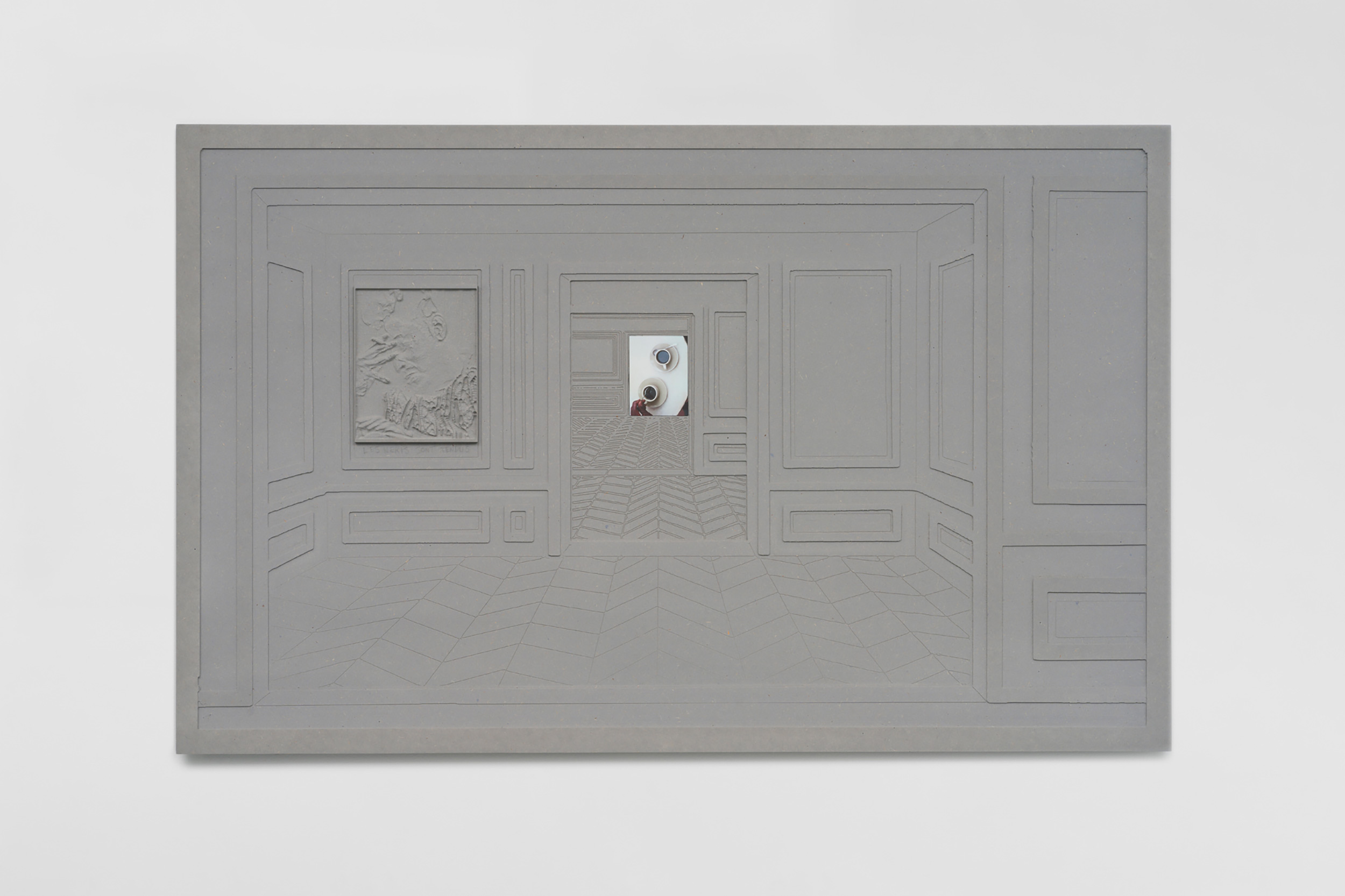Curated by Patrick R. Crowley, the sculpture show uses relief as a springboard into the many perspectives of the three-dimensional
In a gross way, space has become a buzzword. Despite the term’s necessity in many of the soft science fields—fine art, architecture, and dance, to name a few—a space is not simply a room, nor is it a friend’s really cool apartment (you would just use the word apartment). The word signifies two things: The potential to be occupied, and the relationship between object, and emptiness.
Currently on view at Soldes Gallery in Los Angeles, Virtual Volume—a largely sculpture-based exhibition curated by art historian Patrick R. Crowley—broaches the subject of space by filling it. “In the late 1950s or early 1960s, the abstract painter Ad Reinhardt famously defined sculpture as ‘something you bump into when you back up to look at a painting,’” he writes in the show’s press release. When thinking of Reinhardt, the word relief comes to mind: the curator explains how the art world considers the genre a “solution” to the flatness of painting, a style that expands the conception of two-dimensional work into the three-dimensional. Essentially, if paintings lie upon the x-axis, and sculpture the y-axis, relief forms the z-axis, a type of artwork whose genre is wholly determined by its hybridization of the two forms. What Crowley is interested in, however, is how relief disrupts ‘real space’ in order to explore ‘virtual space,’ a specific kind of space that is self-aware of its own potential to be occupied. In both its title and curation, Virtual Volume only considers the latter, problematizing the question of what it means to place an object in a gallery by, ironically, filling a gallery with pieces designed to be interpreted with varied physical vantage points.
In the exhibition, Coleman Collins’s Untitled (Concatenation) and Oliver Laric’s Hunter and Dog both confront this inquiry, using figuration to trick the eye into perceiving the flat as three-dimensional, and vice versa. Collins’s piece employs a Computer Numerical Control (CNC) machine, which is programmed with a series of tracking shots to develop what feels, at least algorithmically, the internet’s own bedroom. Using recognizable images like a meme of Mekhi Phifer, alongside a skewed still of Jim Jarmusch’s The Limits of Control (2009), Collins’s two-dimensional cast uses the CNC-generated space of the painting to encapsulate not just a single frame from a moving image, but the feeling of an entire visual language of migration. Hunter and Dog is less conspicuous, at least upon first glance. A resin statue of a figure and their canine companion, Laric’s work is glassy and perfect from the side, as if the pair were rooted to the ground via the inky black tendrils snaking up their feet and legs, settling in the belly. Head on, however, the subjects seem to disappear. Perspective is where the piece derives its strength, not as a now you see me, now you don’t effect, but a question as to how a transparent object only seems to occupy space from specific vantages.
Based on what he calls “the contemporary stakes of these spatial problems,” Virtual Volume is equal-parts art show and thought experiment. While situated in the real world, Crowley is much more concerned with the open air that lies dormant in the corporeal world’s potential, prioritizing a spectral presence more than any empty room.
Virtual Volume is on view at Soldes gallery in Los Angeles until December 30, 2023.























